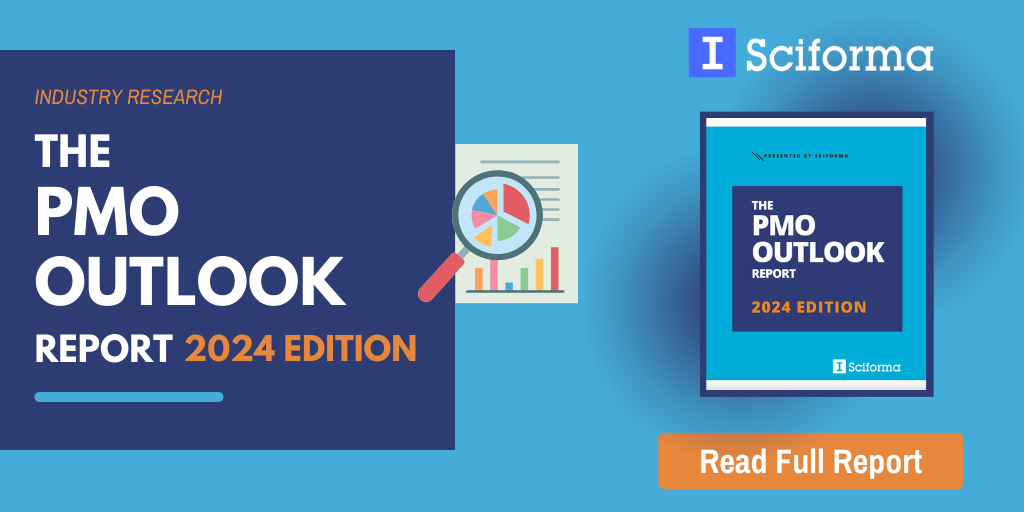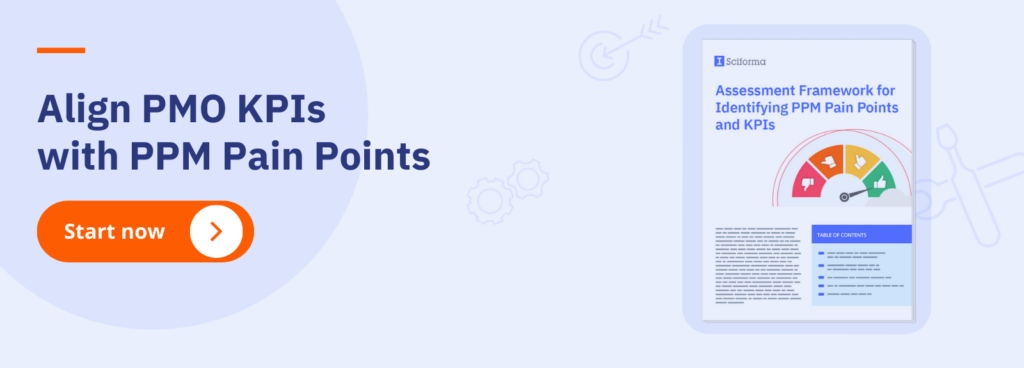- Home
- Blog Center
- 5 PMO Goals and Objectives You Can Achieve with PMO Software
5 PMO Goals and Objectives You Can Achieve with PMO Software
It’s not always easy being a PMO—especially if you don’t have the right tools. PPM software enables PMOs to achieve their goals and objectives by providing a centralized platform for efficient portfolio management. These tools offer features such as project tracking, resource management, and reporting, facilitating streamlined processes and improved decision-making.
A well-implemented PMO software solution is an indispensable asset that empowers PMOs to effectively plan and manage their project portfolios, ultimately leading to the successful achievement of PMO goals and objectives.
1. Select High Value-Added Projects to Achieve PMO Goals and Objectives
How many times has your company launched a project, but had to abandon mid-course because it ran out of resources, budget, time or did not bring any added value? It goes without saying that selecting and prioritizing the right projects is a key goal for the PMO. What if you could analyze your projects’ value for your company and calculate the ROI before executing them? A robust PMO tool will allow you to thoroughly evaluate a project. These tools come with analytics capabilities, offering valuable insights into performance metrics, and helping PMOs make data-driven decisions. This way, you can ensure projects align with your strategy beforehand, and thus avoid wasting time and money on failing initiatives.
2. Run Budget and Cost Scenarios at the Portfolio-Level
Budget optimization is high on the list of PMO goals and objectives. You need to make sure your PMO has the budget and resources to run new projects. You should be able to simulate multiple scenarios at project portfolio level and to compare them against live projects. Industry-grade PMO tools come equipped with scenario modeling capabilities that’ll let you do just that.
These tools provide robust features for budget planning, tracking, and analysis, enabling PMOs to establish realistic financial expectations. Through automation, PMO software streamlines budgeting processes, reducing manual errors, and ensuring accurate data. Finally, real-time visibility into budget performance allows PMOs to monitor expenses, identify potential overruns, and make timely adjustments.
3. Execute on PMO Goals and Objectives at Maximum Speed with Agile or Bimodal Approaches
Many companies run projects with the Waterfall methodology. But sometimes, they have to use Agile, maybe even both. And some PMOs don’t know how to deal with it. How about not having to choose and be able to use each methodology without having to switch software?
Powerful PMO platforms just remove the problem, as they allow you to manage every project easily. PPM tools provide a versatile platform that accommodates both traditional and Agile methodologies, allowing PMOs to manage diverse project types within a single system. They enable PMOs to implement flexible workflows, adaptive resource allocation, and customized reporting to meet the needs of hybrid projects. This enhances PMO agility — which is one of the key goals and objectives of modern organizations.
4. Map and View Resource Allocations Across Portfolios
Within a company, human resources are limited. Optimizing their utilization is therefore a priority for PMOs. It is essential that your PMO has visibility on what they’re doing and to which task/project they are allocated. PMO tools enable you to track your teams’ work at the portfolio level and optimize your resource allocation. They offer reporting capabilities that provide comprehensive insights into resource utilization, helping organizations maintain control and accountability. The goal and objective is to prevent your PMO from wasting time and money on non-strategic projects.
5. Eliminate Time Waste from Administrative Tasks
In PPM, “wasted time” is defined as the sum of low value-added tasks performed by workers throughout a project. For example, looking for a document or information, manually gathering data, or manual reporting. Low value-added tasks performed by project teams represent a much larger workload than high value-added tasks. PMO tools like Sciforma help you focus productivity efforts on high value-added work by automating low value-added tasks. The benefits: reduced administrative overhead and improved overall project productivity!
To learn more about selecting the right PPM software for your PMO goals and objectives, explore our PMO Self-Assessment Guide below.







